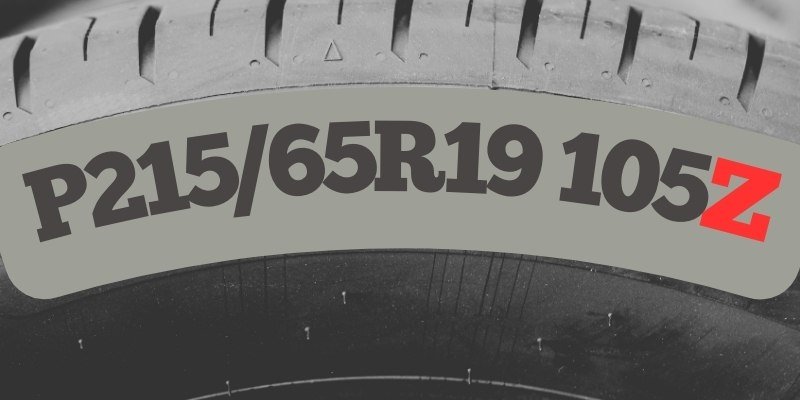What Does the Z Mean in Tire Size?

The “Z” in a tire size indicates that the tire is rated for speeds over 149 mph (240 km/h). It’s found in high-performance tires designed for sports cars and other fast vehicles.
While most drivers won’t need Z-rated tires, they’re crucial for ensuring safety and performance in cars capable of reaching very high speeds. The Z rating is part of a broader system that helps drivers choose the right tires for their vehicles and driving needs.
Decoding the Tire Size Code
Imagine you’re looking at a secret code on the side of your tire. It might look something like this: P225/50ZR17.
Each part of this code tells you something important about the tire, kind of like how your address tells people exactly where you live. The “Z” is just one piece of this puzzle, but it’s an important one for speed demons!
Let’s break it down:
- P: Type of tire (Passenger)
- 225: Width of the tire in millimeters
- 50: Aspect ratio (height of the sidewall as a percentage of the width)
- Z: Speed rating (more on this in a moment!)
- R: Radial construction
- 17: Diameter of the wheel in inches
The Need for Speed
Think of speed ratings like weight limits on elevators. Just as an elevator has a maximum weight it can safely carry, tires have maximum speeds they can safely handle. The Z rating is like the “heavyweight champion” of tire speed ratings.
Here’s a quick rundown of some common speed ratings:
- S: up to 112 mph
- T: up to 118 mph
- H: up to 130 mph
- V: up to 149 mph
- Z: over 149 mph
The Fast and the Curious
So why “Z”? Well, when tire manufacturers first created the speed rating system, they thought V (149 mph) would be the highest they’d need.
But then came along sports cars and supercars that could go even faster. Instead of continuing the alphabet (which would have been W, X, Y), they decided to jump to “Z” to show that this was something special.
It’s like how in school, an A+ is better than just an A. The “Z” is the tire world’s way of saying, “This tire can handle some serious speed!”
Beyond Z
Believe it or not, some modern supercars are so fast that even the Z rating wasn’t enough. That’s why you might see ratings like (W) and (Y) in parentheses after the Z. These indicate even higher speed capabilities:
- (W): up to 168 mph
- (Y): up to 186 mph
It’s like tire manufacturers are saying, “You thought Z was fast? Hold my beer!”
Do You Need Z-Rated Tires?
Unless you’re planning to audition for the next “Fast and Furious” movie, chances are you don’t need Z-rated tires. For most of us, S or T rated tires are more than enough for daily driving.
Choosing Z-rated tires when you don’t need them is like buying a supercomputer to check your email. It’ll do the job, but it’s overkill and might even have some drawbacks:
- Higher cost
- Potentially harsher ride
- Faster wear in normal driving conditions
Safety First
Using tires with the correct speed rating isn’t just about going fast – it’s about staying safe. Tires aren’t just rubber doughnuts; they’re highly engineered products designed to perform under specific conditions.
Using a tire with too low a speed rating is like trying to run a marathon in flip-flops. You might be okay for a while, but eventually, things could go very wrong. The tire could overheat, lose its shape, or even come apart, potentially causing a serious accident.
Conclusion
In the world of tires, “Z” is the mark of a speed demon. It tells us that a tire can handle speeds over 149 mph, making it suitable for high-performance vehicles.
While most drivers won’t need this level of performance, understanding tire speed ratings helps ensure we’re using the right tires for our vehicles and driving habits.
Remember, when it comes to tires, it’s not about having the highest rating – it’s about having the right rating for your needs. Stay safe, and may your rides be smooth (and appropriately speedy)!

Meet Caitlin McCormack, a Tire Size Expert and Blogger Passionate About Everything Related to Tires. With Years of Experience in the Tire Industry, Caitlin Has Become an Expert in Tire Sizes and Their Impact on Vehicle Performance.
